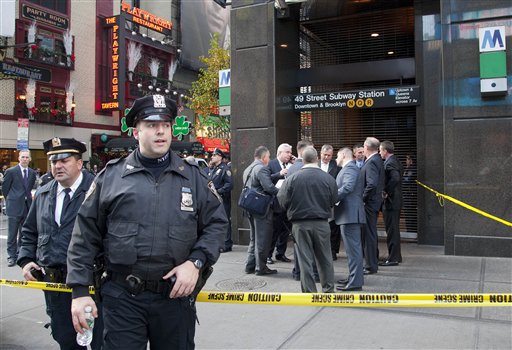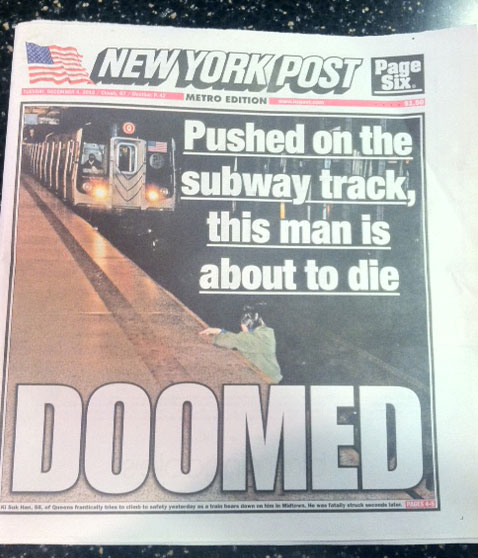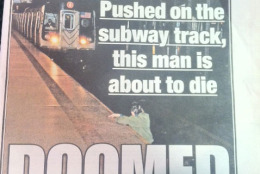



(Ed. Note: This story includes a photo gallery that includes an image that may be disturbing for some.)
Darci Marchese, wtop.com
WASHINGTON – A Queens man was pushed onto the subway tracks in New York City Monday and was killed by an oncoming train.
Now, there’s controversy over the New York Post’s front page, which shows the man gripping onto the platform in the tracks, right before he was struck and killed.
Does the photo go too far?
“Pushed on the subway track, this man is about to die,” reads the top headline.
“DOOMED” is splashed across the bottom of the paper. You can see the back of the man’s head and upper body as he holds onto the platform, staring at the train coming toward him.
Poynter writes that the “New York Post faces backlash over front-page photo of man ‘about to die’ on subway track” in a piece on their website.
Kelly McBride, senior faculty for Ethics, Reporting and Writing at the Poynter Institute, says there are two questions.
There is the decision the photographer made to take a photo rather than help the man. McBride says that’s a hard decision to judge since no one knows how far he was to the man on the tracks or what the circumstances were.
The freelance photographer says he was snapping photographs, hoping the flash would catch the attention of the train operator.
There’s then the question of whether or not to publish a photograph that many consider disturbing.
McBride says journalists have to make that sort of decision in a war or famine.
She says a journalist must have a significant reason for showing us something difficult to see.
“When I look at this photo, I don’t see a journalistic purpose. I cannot imagine how the audience benefits, what knowledge we gain, by seeing this incident, a moment before this man is about to die,” she says.
McBride says there’s been “very loud backlash on Facebook” but says she doesn’t know how the typical New York Post audience feels about it since it is accustomed to sensational material.
Follow @DMarcheseWTOP and @WTOP on Twitter.
(Copyright 2012 by WTOP. All Rights Reserved.)







